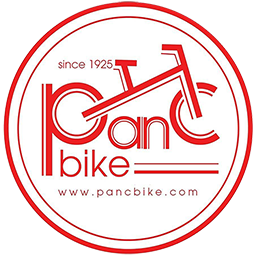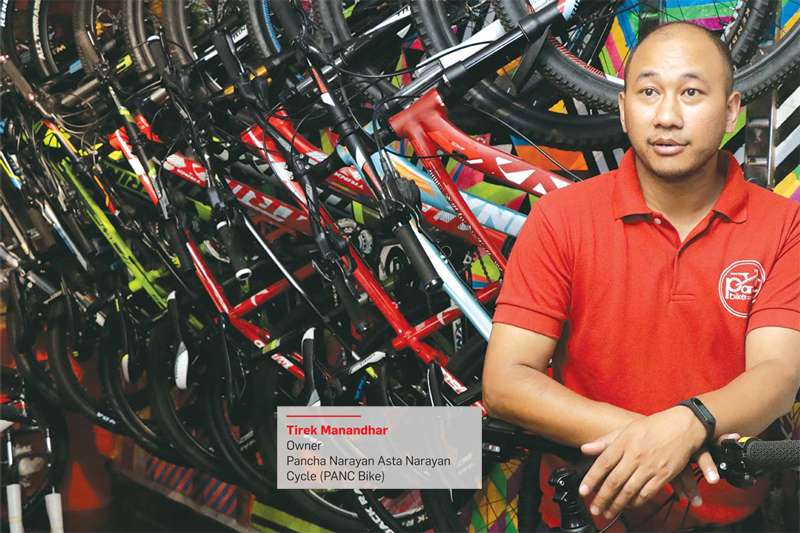Cart Detail
- BIKES
- COMPONENTS
- RECONDITION
- HIRE
- SERVICING
- STORE
- RIDES
- BLOG
- CONTACT
- 0
FILTER SEARCH
SEARCH RESULT
- ×
- ×bicyclediaries
Bookmark DETAIL


ID: 2201B13
Created At: 05-Jan-2022 12:20 PM
Build Cities for Bikes, Buses, and Feet—Not Cars
San Francisco's MTA boss Jeff Tumlin is one of a new breed of planner trying to kick cars out of the city. That's good for business, good for people, and amazing for the planet.
New York drivers, never shy, complained about losing lanes. Retailers worried about losing customers. But polling showed that pretty much everyone else loved Sadik-Khan's changes. She got 400 miles of bikeways built. She turned Times Square car-free, started a bike-share program, and helped found a national organization of city planners that could teach US cities to push these kinds of ideas as hard as the old car-forward ones. “We just lit the spark, gave cities permission to innovate,” Sadik-Khan says. “Change is difficult. A lot of cities are debating whether to build more roads and highways. They need to stop repeating the failures of the last century.”
Octavia Street, in Hayes Valley, was completely remade with parks and people in mind after the 1989 Loma Prieta earthquake ushered the freeway out.
Photograph: Cayce Clifford; Drone operator: Noah Berger
Tumlin expertly pedals a bright orange Jump bike toward the park on Octavia. I'm less expertly pedaling his bike, an electrically boosted thing that'll spin up to 25 mph if I don't watch it. (Tumlin often tweets about his rides on his ebike, and a few weeks after our trip, someone tried to steal it—during Tumlin's photo shoot for WIRED. He ran after the guy and got it back.)
Honestly, I look like a wobbly, bike-curious dope in a secondhand helmet. Tumlin, on the other hand, cuts a natty figure in a sweater, jacket, and really nice shoes. (At work he favors tailored suits; a local news outlet reported his new job with the headline “Mayor Appoints Stone Cold Fox Jeffrey Tumlin to Lead SFMTA.”)
The Parisian version of Octavia, it turns out, isn't all he'd hoped. “We screwed this one up,” Tumlin says. “The island is too narrow, so the outside lanes are too wide.” Traffic pours off the still extant part of the old freeway toward the park, and some cars use the outside lanes to bypass the center. Making the point, a silver sedan rolls up and presses us from behind. We float right and it accelerates. I see Uber and Lyft stickers in its rear window. As the sedan crawls past, Tumlin looks through the window at the driver, smiles broadly, locks the extended middle finger of his left hand on target, and says, amiably but loud: “Fuuuuuck yoooooou.”
Street Sweepers
Cars emit a huge chunk of cities' greenhouse gases, but cities are doing something about it—and not just in New York, Paris, and San Francisco. It makes sense: Cities that don't help destroy the planet are also nice places to live.
SEOUL: UNBUILDING
In 2003, Seoul shifted a freeway-building binge into reverse. City workers dismantled an expressway and turned its path into a popular park. Since then, Seoul has knocked down 15 more freeways and is building a transit network emphasizing bikes and trolleys.
BARCELONA: SUPERBLOCKS
The city's basic plan was already a grid of wide boulevards threaded with smaller side streets. Barcelona made side streets narrower, greener, and more park-like—extremely unfriendly to cars, which now stick to the perimeters. These new superblocks are so popular, the city plans to make 500 more.
COPENHAGEN: BIKES, BIKES, BIKES
Copenhagen was as car-choked as any modern city. But years ago, moms and urban planners united to make streets safer for children by encouraging bikes and walking. Today the city has more than 250 miles of bike lanes, including bike-only bridges and cycle superhighways. Almost two-thirds of the city's 1.3 million residents bike to work or school.
LOS ANGELES: BUSES
The city most famous for car culture is doubling down on public transportation. In the face of nationwide declines in bus ridership, LA's Metro is using survey data, community meetings, and location-based cell phone tracking to make buses faster and easier to reach for 2.2 million people.
TEMPE, ARIZONA: HOUSING WITHOUT CARS
Amid the sprawl of greater Phoenix, a development called Culdesac—opening this year—has 16 acres of housing, enough for 1,000 people, built next to a light rail line, and no residential parking. Cars aren't allowed.
Maybe that makes Tumlin sound like a zealot or an asshole. In my time with him, he was neither; he says he just doesn't like bullies. And he thinks that cars screw up cities. That's why he peels off from the park and turns down a side street. A hundred years ago it would have been an alley; a hundred years before that it might've been space for horse-drawn carriages. Now it's a cozy street full of shops—an expensive luggage store with displays more like an art gallery, a famous maker of custom-made corsetry. We dismount where the street is lined with stone benches and plantings that make it almost too narrow for cars. That's what Tumlin wants to show me. This urbane little street is designed for people moving at the speed our eyes and brains are most able to process and respond to, he says—which happens to be no faster than a run. But behind the wheel of a car, inputs come too fast. Thirty miles an hour! Locked in a steel box, toggling between a crime podcast and Google Maps, an illusion of aloneness disconnects us from the sometimes literal impacts of our behavior. We get, frankly, deranged. “The social contract breaks down,” Tumlin says.
“Yeah,” I say. “You don't even have to wear pants in a car.”
“It's also literally the only place you can get away with murdering someone by calling it an accident,” he says.
The people sharing spaces on the sidewalk, or inside a bus or subway car, though, self-assemble as if in a theater where we perform civil society for each other. We remove our backpacks so more people can fit. We let people exit before we enter. Someone in front of us drops something, we pick it up for them. Tumlin has shown me this little street because it's scaled to let all that happen. “But I can't say my job is telling people about civility,” he says.
After he left Stanford and ended up at Nelson\Nygaard, Tumlin worked not only on that Octavia park but in cities from Seattle to Abu Dhabi. In fact, a lot of what he's planning for San Francisco would look familiar to the rest of the world. New York just closed 14th Street, a key crosstown boulevard, to private cars—a bus trip that took 17 minutes now takes just 10, and weekday ridership has been up 17 percent. Seattle's adding new homes and new transit. Oslo is banning cars from its city center. The center of Ghent in Belgium is divided into zones that transit can cross freely but cars can't. London charges drivers to enter downtown. And Paris—oh, man, Paris. After building miles of bike lanes and turning huge swaths of the city car-free, Mayor Anne Hidalgo has reduced car traffic by 22 percent. Her reelection campaign is predicated on eliminating 60,000 parking spaces and building a “city of 15 minutes,” where jobs, housing, and anything great is within a quarter-hour's trip—on foot, on bike, or on Metro.
In Portland, bike lanes with barriers that protect them from traffic have helped reduce road fatalities for cyclists, pedestrians, and motorists by 75 percent over 20 years—even as the number of cyclists quintupled.
That's all a ways off for San Francisco, but you can see the road ahead. As Tumlin and I pedal over to the long north-south artery of Van Ness Avenue, we have to dismount to get past a construction project, where workers are putting in separate lanes for bikes and buses. We hang a left on Market Street and pull into the new bike lanes tucked behind new boarding islands for buses, all built in preparation for Market's closure to private automotive traffic. (A proposal to set aside part of the San Francisco-to-Oakland Bay Bridge for buses is pending.)
Of course there are obstacles. At one point on our ride, the bike lane we're following takes a sudden turn away from the curb, out into traffic, and then quickly back inward again. Thanks to the litigious, whiny owner of the store we have just passed, the bike lane zigzags around exactly one car's worth of parking. And, acceding to local demand, the transit agency built a handful of the city's new trolley-boarding platforms with a single parking space, positioned so that a car in that spot blocks the doors of an entire trolley car. “While at the citywide level, I think we could all agree that the safety of transit riders is more important than a single parking space,” Tumlin says wryly, “at the block level, it becomes more challenging.”
See More Product Images:
Related Bookmarks
202007B1528
Birendranagar aims to be...
202007B1614
THE BICYCLE DIARIES...
© 2025 PANCBIKE. All rights reserved.
Hand-crafted & Made with : KTM Labs




